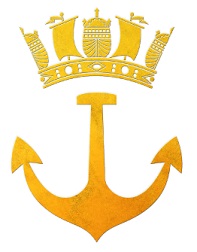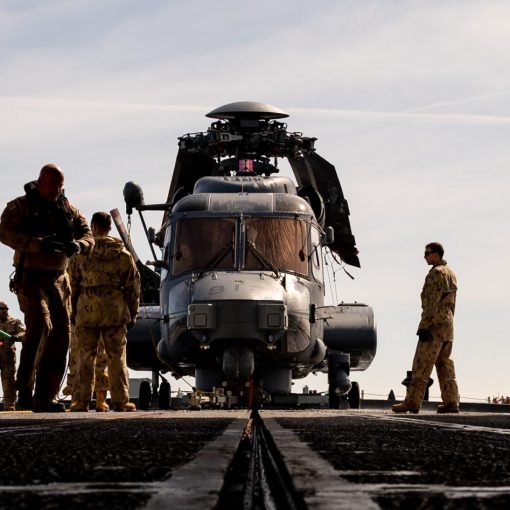By Chris Henderson, 2 November 2025
[This is an excerpt of an article in Vol. 21, No. 2 of Canadian Naval Review. For the full article, click on the link below.]
Seapower runs the gamut from relatively benign regulatory power to the use of lethal force to stop an invasion. This spectrum requires subtle management and the smooth hand-off of responsibility to appropriate authorities as the needle moves from side to side. That function is complicated dramatically by the nature of the maritime domain – and, in Canada’s case – by its extreme climate, small population and enormous distances, especially of the Arctic environment.
The federal government has maintained two fleets to manage this operational spectrum: the Royal Canadian Navy (RCN) for war-fighting; and the Canadian Coast Guard (CCG) for everything else. Recognizing the exclusive jurisdiction of the RCN to provide the lethality and firepower needed to ensure the maritime defence of Canada, this article will limit its examination to the improvement of the CCG’s toolkit necessary to deal with the enormous range of activities, challenges, and threats that are ‘left of bang’ on that spectrum.
The CCG was created in 1962 to bolster marine safety in response to growing oceanic trade and the opening of the St. Lawrence Seaway in 1959. In its initial manifestation, the CCG was part of the Department of Transport,1 but was transferred to the Department of Fisheries and Oceans (DFO), in the 1990s as a cost-saving measure.
The CCG derives its mission and mandate from a variety of statutes.2 These include the Oceans Act, the Canada Shipping Act, 2001, the Marine Liability Act, the Arctic Waters Pollution Prevention Act, and the Wrecked, Abandoned or Hazardous Vessels Act (WAHVA). The last was written specifically to confer new enforcement authorities on the CCG.
While seemingly precise in their articulation of CCG’s missions, these enabling statutes (with the notable exception of WAHVA) are mostly silent on how the CCG is to do its job. For example, within the Oceans Act there is a single section of exactly 175 words (including the title) that defines the entirety of the CCG. A single sub-section, 41(1)(e), allows the Minister to “… support … departments, boards and agencies of the Government of Canada through the provision of ships, aircraft and other marine services” – in essence a blank cheque that allows the coast guard to do practically anything asked of it by another federal department. This generality provides beneficial operational flexibility but does not facilitate policy innovation or capability development as the CCG’s operating environment evolves rapidly.
The CCG has remained at DFO until this year as a ‘Special Operating Agency’ – an organizational category that in all practical respects is a distinction without a difference. It is an important marine safety organization subordinated within DFO and entirely dependent on that department’s corporate enablers for connection to the rest of the federal government. Its many responsibilities include, inter alia, marine search and rescue, pollution response, vessel traffic management, icebreaking, maintaining ‘aids to navigation’ (more commonly understood as buoys and lighthouses), supporting scientific research, and ferrying around various law enforcement agencies. The CCG is the unsung ‘rent-a-ship’ company of the federal government, and it impressively and perennially meets or exceeds all the expectations placed on it by Canadians and their elected leaders. The iconic red-and-white hulls of its ships are a familiar and comforting sight on all of Canada’s coasts and waterways, and it is often the only federal maritime presence in Canada’s vast Arctic.
…
To read the rest of the article, go to https://www.navalreview.ca/wp-content/uploads/public/vol21num2/cnr_vol21_2_Henderson.pdf
Image: This 2008 photo shows the icebreaker CCGS Pierre Radisson, based in Québec. In winter, it is assigned to icebreaking and ship escort operations in and around the St. Lawrence River. Credit: P. Dionne, Fisheries and Oceans Canada





